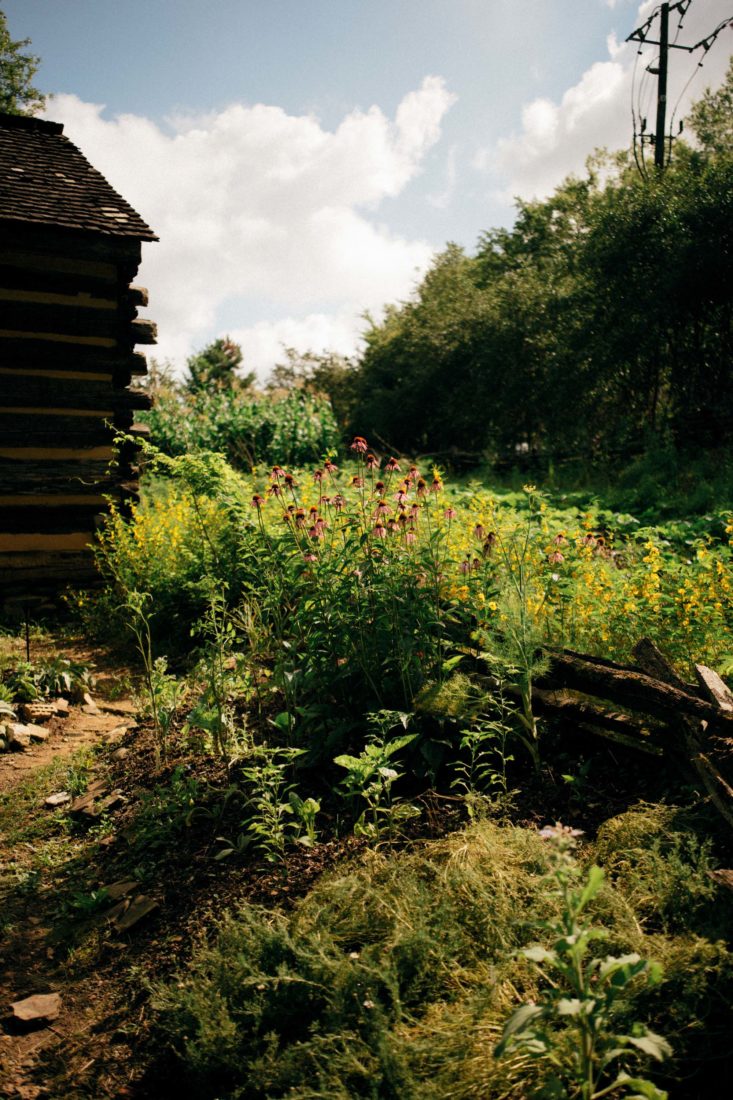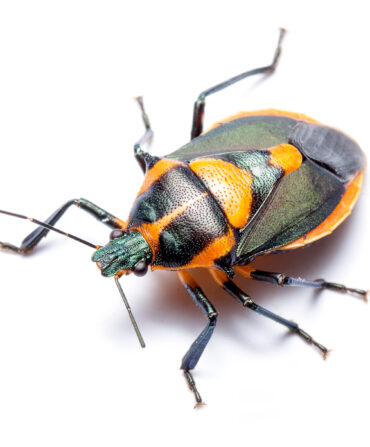Tucked into the northernmost reaches of the elegant tree-lined streets of Buckhead, in Atlanta, lies a little-known and often-overlooked gem of great historical significance: the enslaved people’s garden at Smith Farm, a spread on the campus of the Atlanta History Center meant to illustrate what a working slaveholding farm would have been like.
Standing there, it’s easy to forget that the farm sits in one of the most populous cities in the South. Birdsong and a variety of aromas fill the air: the pungent earthy smell of compost; the delicate, sweet scent of chamomile. Only when following the flight path of blue jays might a visitor look up and see the high-rises. Historic demonstration spaces like this one exist throughout the region, but Smith’s location makes it special: The city setting means people who might not regularly get to experience agriculture have access to the Center and can learn about, say, traditional growing techniques or the uses of edible and medicinal plants.
“It’s one of the most fantastic botanical landscapes, curated landscapes, in the South,” says Michael Twitty, a James Beard Award–winning author and culinary educator who consulted on the enslaved people’s garden. “This is a shared history, and the way the Center tells these stories is revolutionary.”
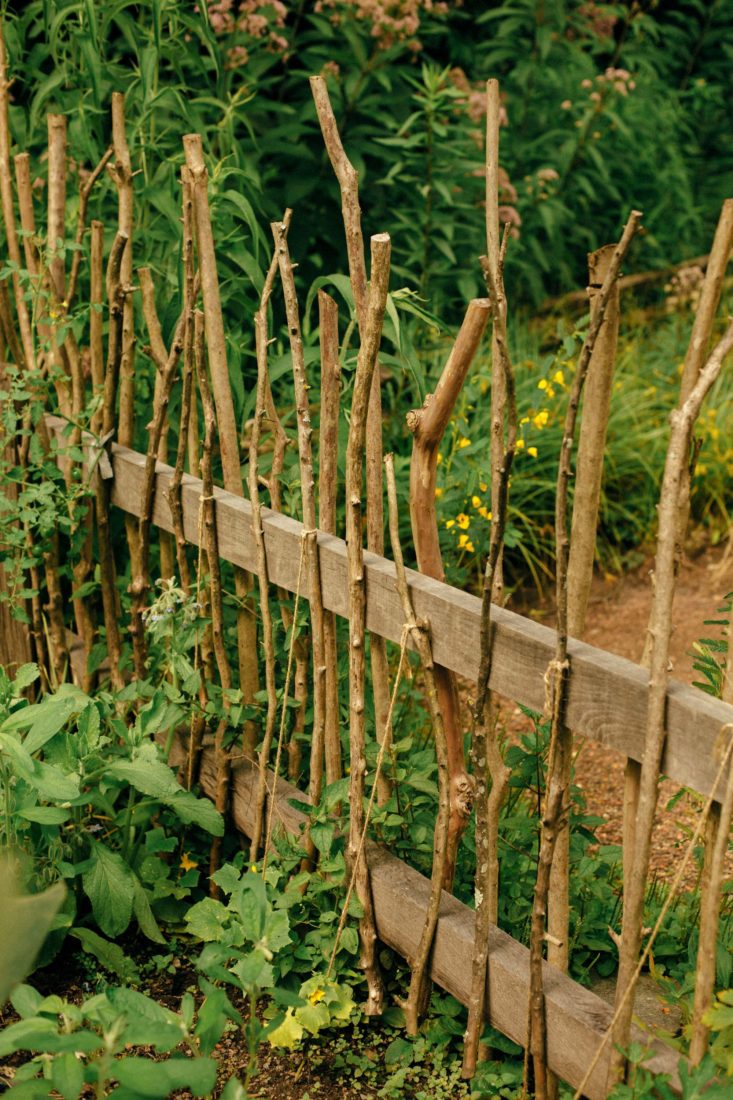
The Smith family resided in the main 1840s house, one of the region’s oldest examples of nineteenth-century working farm architecture still standing. The farm back then totaled more than eight hundred acres in neighboring DeKalb County, and according to records, the Smiths often owned between eleven and nineteen enslaved people, who cultivated the land and kept the grounds running. The home was relocated to its current location in 1969, and the Atlanta History Center opened its doors on the property three years later.
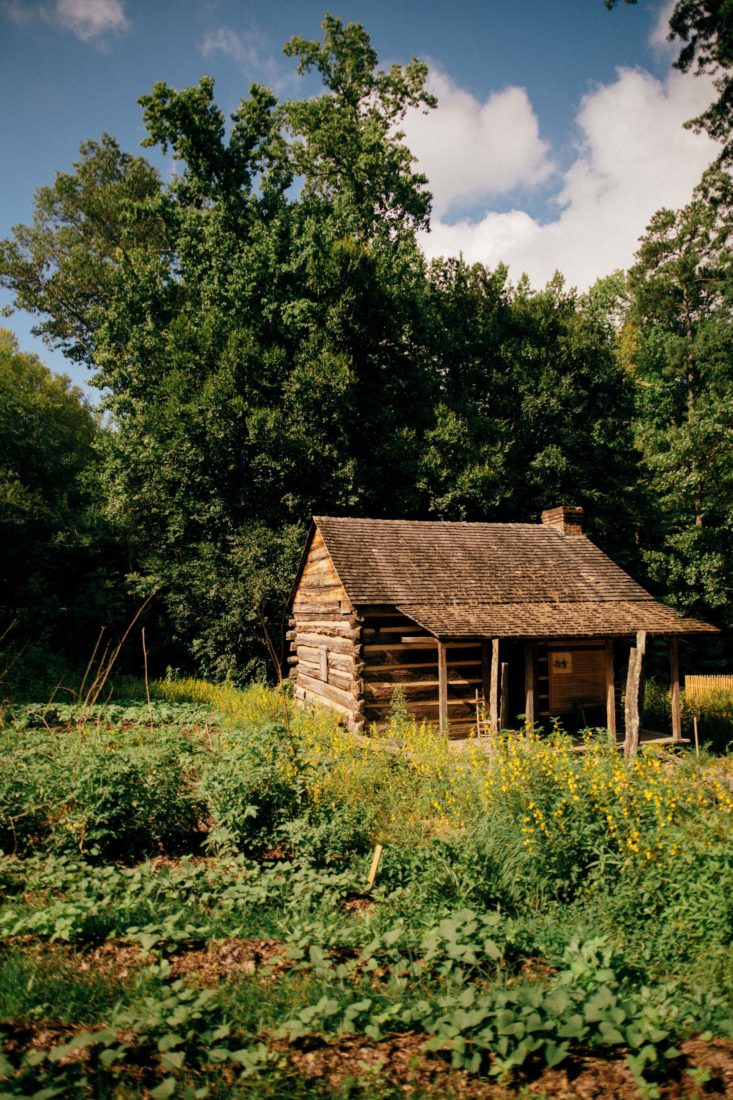
“We wanted to understand what was going on in the 1860s, when this farm existed, and what created this landscape,” says Sarah Roberts, the vice president of Goizueta Gardens, the collection of green spaces the Center has under its care. That included the personal lives (and living spaces) of those forced to work the land, as represented through a preserved cabin and the enslaved people’s garden, added in 2004.
In 2014, the Center relocated the garden to create the immersive experience seen now. To form the plot, researchers used the Center’s Cherokee Garden Library holdings, including historic seed catalogues, newspapers, and books, for crop descriptions. They also incorporated hands-on knowledge from heirloom vegetable experts and seed-saving practitioners like Twitty and Ira Wallace, who, through her work at the Southern Exposure Seed Exchange, has encountered more than eight hundred varieties of open-pollinated heirloom and organic seeds. “We started corresponding about collards,” Wallace recalls with a laugh. “The horticulturist was trying to figure out when and where the crop came along, and what varieties might have been in people’s gardens.” With a bit of sleuthing, Wallace and the staff deduced, for instance, that the enslaved would have likely planted Green Glaze collards, which were introduced around 1820.
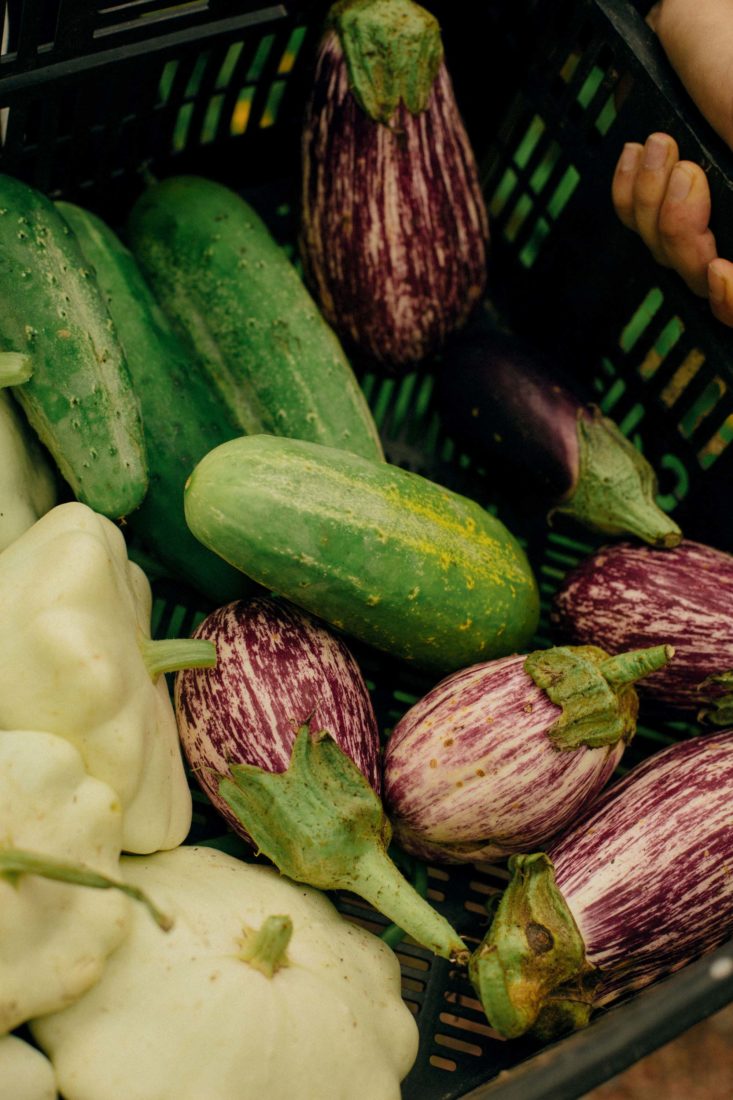
“It’s a little patch,” Twitty says of the 640-square-foot plot, which is surrounded by a fence composed of slim tree limbs and sturdy branches. “But it tells a lot of stories, and they use every inch of the grounds to give you as much of the picture as possible. Sometimes these gardens are meant to be literal living examples of what you see in the record. This space at the Atlanta History Center is conservation not only for the heirloom plants, but also for the food culture that came along with it.”
The people who would have tended a plot such as this would have used innovative, ancestral knowledge to make the most of the small space and the seeds they acquired. The indigenous practice of companion planting complementary produce, for example, such as onion, squash, and parsley. Other seeds get planted in low, wide mounds rather than in traditional rows. The delicate yellow flowers of mullein may look ordinary, but to enslaved people who lacked reliable access to medical treatment, herbs such as these, along with borage, boneset, and comfrey, were lifesavers. Ritualistic plants like basil, planted at the front door of a home for good luck, tethered the workers to their ancestors, and crops like benne, okra, peanuts, watermelon, cowpeas, and fish peppers, to their West African culinary traditions. The Center also incorporates into its programs and tours accounts of how the farm’s enslaved people thought about and handled composting, pest control, and the historically accurate heritage-breed poultry, sheep, and goats on hand.
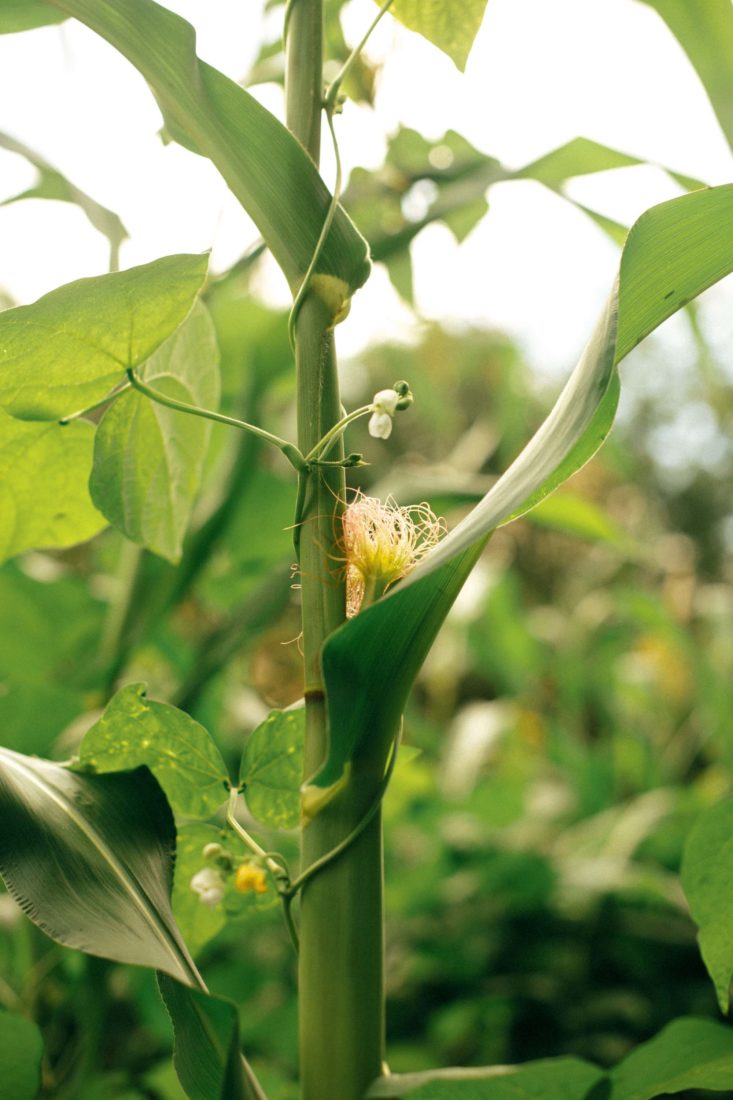
Over the last year, though, the impact of the enslaved people’s garden has broadened beyond the Center’s gates. When covid-19 closed the destination and its cooking demonstrations to visitors, Emily Roberts, the Center’s director of urban agriculture, and other staff members partnered with the local nonprofit Concrete Jungle, which works to alleviate hunger and food insecurity—problems the pandemic exacerbated. They planned the season’s plantings, then, with donation in mind: the Long Green Improved cucumbers, a variety dating to 1842, for instance, and the circa 1864 Kentucky Wonder pole bean. So far, the Center has harvested and donated more than a thousand pounds of produce from the enslaved people’s garden and Smith Farm’s orchard, kitchen garden, and field crops.
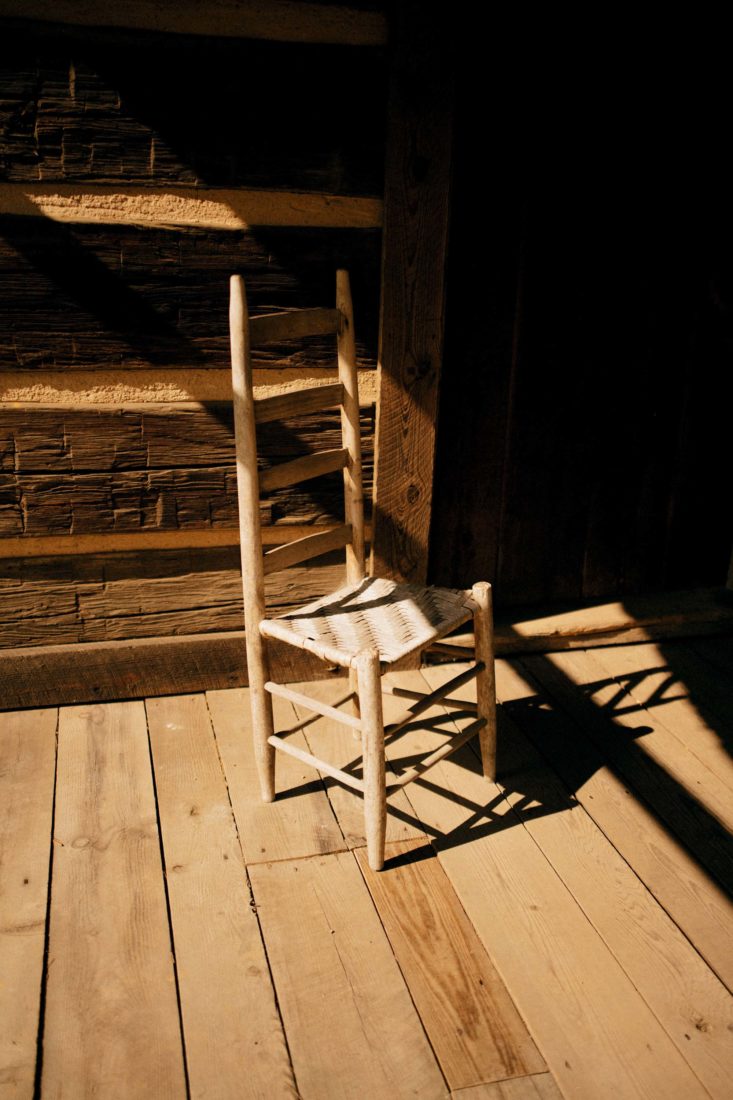
“Some of the things we grow aren’t your typical vegetables,” Sarah Roberts explains with a laugh. “Green-striped cushaw squash makes an awesome pie, but nobody knows that.” To make unfamiliar plants accessible to recipients, the staff often includes recipes, as well as seeds, so folks can cultivate their own gardens. “We may not be able to do as much as other places,” Roberts says, “but if everybody makes an effort—if we can gather as a community and recognize where the needs are, we can collectively make a big impact.”


